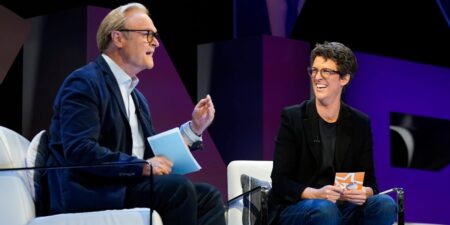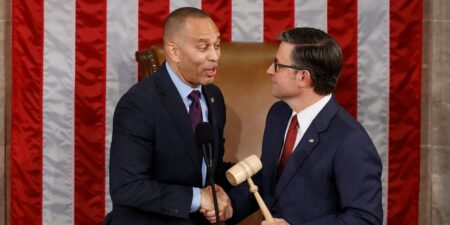The US has been trailing China in the race for open-source AI. OpenAI’s latest move could help close that gap — but it could also spur China to speed up its own releases.
Last week, OpenAI CEO Sam Altman announced GPT-oss, a family of large language models with “open weights.”
That means anyone can see or use information determining how the model works after it’s been trained — but not the full source code.
“We believe this is the best and most usable open model in the world,” Altman wrote on X on Aug 6.
GPT-oss is OpenAI’s first open-weight language model in over five years, since the release of GPT-2 in 2019.
OpenAI’s models ‘narrowed the gap’ with China
Ray Wang, the research director for semiconductors and emerging technology at Futurum Group, said OpenAI’s open-weight release was likely influenced by the strong reception for open-sourced Chinese models such as those from DeepSeek, whose release shook markets in January.
Wang said OpenAI’s new models “narrowed the gap” with China thanks to their “competitive performance benchmarks and sizes against their Chinese counterparts.”
“China still maintains a slight lead, with a broader, higher number of competitive open-source models available in the market compared with the US,” he added.
Chinese open-source models include Alibaba’s Qwen series, Baidu’s ERNIE 4.5, and Moonshot’s Kimi K2, alongside DeepSeek’s recent V3 and R1 releases.
But with the launch of OpenAI’s open-weight models, Chinese firms might respond by accelerating their own open-source releases to stay top of mind for developers, said Wei Sun, the principal analyst for AI at Counterpoint Research.
More importantly, they would aim for “ecosystem lock-ins” with models integrated into dominant domestic platforms like Alipay and WeChat “to monetize downstream rather than at the model layer,” she added.
Wang said China’s drive to “push the boundaries of open-source models will likely continue unabated,” adding that “OpenAI’s action may accelerate and motivate their efforts.”
Why catching up matters
If the US doesn’t close the gap in open-source AI, Chinese models could gain more momentum and become the default foundation for applications and research around the world, Wang said.
For American companies, that could be a problem, said Natham Lambert, a senior research scientist at the Allen Institute for AI.
He told Business Insider that “if the US doesn’t invest in the open AI race, the standards by which AI is developed will become Chinese.”
“American companies will become secondary markets, rather than the primary beneficiary of AI progress as they have been for the majority of AI’s history,” he added.
China’s push in open source is also more than just sharing the latest technology, said Lian Jye Su, the chief analyst at Omdia, a technology research and consulting firm.
“It’s also about developer engagement and influence, as well as a way to escape the increasingly restrictive access to US technology,” he added.
The Trump administration said in its “America’s AI Action Plan” that the US “needs to ensure America has leading open models founded on American values” because they could become global standards in business and academic research.
Tech leaders like Marc Andreessen have said it’s vital to have a Western open-source champion, since the values, assumptions, and messaging embedded in a model are “baked” into its weights and can’t easily be undone.
Is it real momentum?
Lambert called OpenAI’s move a “major cultural step” for American tech firms, saying it signals that releasing open models “should be the standard” for leading AI companies.
OpenAI is not the only US tech company that’s embraced more open models.
Elon Musk’s xAI released Grok-1 with open weights, and Google DeepMind rolled out its Gemma series as open-weight models. Meta’s Llama models are also open-weight.
Mark Zuckerberg, who has been a major proponent of making AI more open-source, recently suggested that Meta’s powerful models won’t always be open-sourced.
But analysts like Sun and Wang remain cautious about declaring a broader US shift toward open source.
While GPT-oss has “strong performance and practical adoption potential,” the models are not fully “open source AI” under the Open Source Initiative’s definition, Sun said.
Sun called OpenAI’s release “more symbolic” than structural. There’s also the matter of timing: OpenAI’s timing, just days after Trump unveiled “America’s AI Action Plan,” underscores the political and PR value of the move, she said.
OpenAI did not respond to a request for comment from Business Insider.
Read the full article here
















